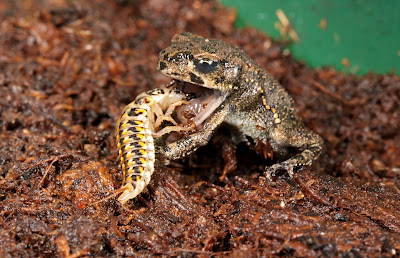Photo credit: Darryl Gwynne/earthtimes.org
Male jewel beetles are literally dying to mate with brown beer bottles in Australia. The orange-brown coloration and manner of light reflection from dimples in the bottles resemble female jewel beetle wing covers, or "elytra".
University of Toronto professor Darryl Gwynne and colleague David Rentz observed this behavior while conducting field work alongside a road littered with the bottles. The bottles may act as "supernormal releasers", or exaggerated stimuli that evoke an instinctive behavioral response. In this case, the males may view the bottles as "super females" and will mate with them at all costs. These relentless mating attempts often result in death by overheating in the sun or through predation by ants. This week Gwynne and Rentz were awarded an Ig Nobel prize at Harvard University for their discovery, which was originally documented in 1983.
Besides the mild humor involved, the discovery highlights one of the many ways that littering can adversely affect wild populations, such as the mating system of a beetle species.
Learn more about Dr. Darryl Gwynne's research:


